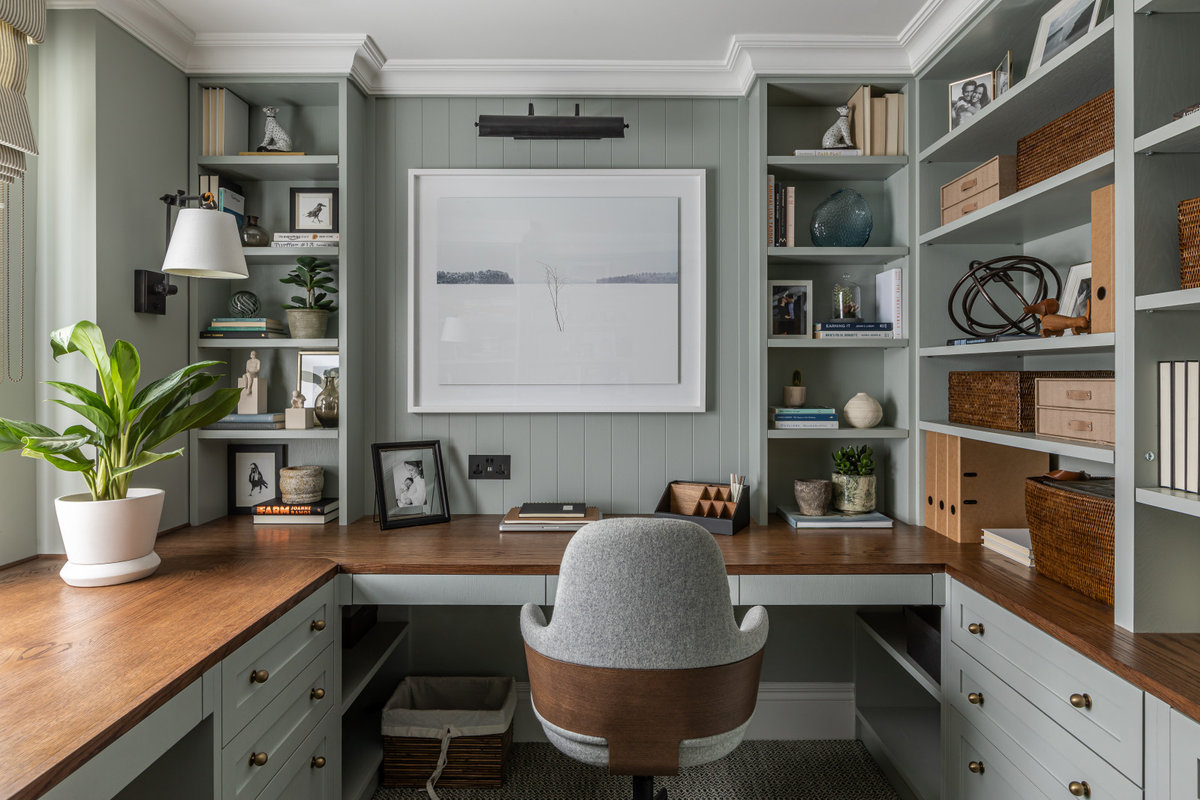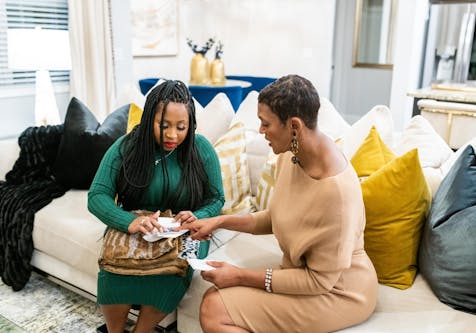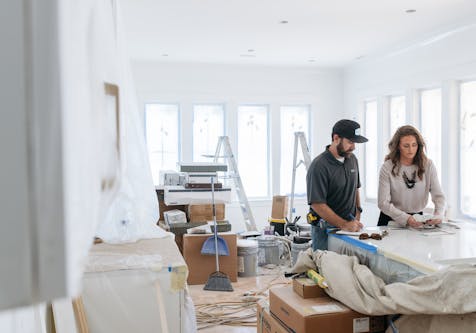How to Charge for Interior Design Services in Ireland

Whether you’re just starting in the industry or already established, knowing how to price your interior design services is essential. Establishing your pricing method helps to keep the design process streamlined from the beginning to the end. It also demonstrates a level of professionalism that is essential to your reputation, client relations, and retention. In this Houzz Pro guide on how to charge for interior design services, we will address all the pros and cons of the different pricing models available.
Types of interior design pricing structures
As you learn how to charge a client for interior design services, do not forget to keep in mind your long-term business goals. You may need to strike a balance between the short-term urgency to acquire new clients and long-term business growth, but it can be done! Keep reading for a full breakdown of how to charge interior design fees. Click a link below to jump to the section you're most interested in:

Flat or fixed interior design fee
Pros
- By defining the project's scope early, you set your own realistic expectations.
- The client knows upfront how to budget for your services from the beginning.
- Since you will receive payment up front knowing how much you’ll earn helps you manage your business better and can help you plan for the future.
Cons
- May work against you with a client who abuses your time. This can be detrimental to your business if you have other clients who require your time as well.
- It doesn’t offer clients transparency about how much time you put in behind the scenes
- Doesn’t cover you and your time if unexpected issues arise, unless you’re experienced or exceptionally accurate with your estimates
How to determine a flat rate
- A fixed-rate pricing model takes into consideration the total time it will take to complete a project. Calculating it could look something like this: (estimated number of hours spent on the project) x (hourly rate) = fixed rate. This option may work for your business but it is crucial to consider the pros and cons.

Hourly interior design rate
Pros
- Adds a level of clarity between you and the client
- Covers you financially if there are delays
- You’re fairly compensated for the total time spent on a project
- Incentivises clients to make quicker decisions and not waste your time
Cons
- May work inversely to undervalue your time
- Has the potential to irritate clients because you cannot offer an exact estimate at the beginning of a project
- Carries a significant administrative burden
- Is most likely to undercount or over-count your hours, as 100% accuracy in time tracking is difficult to achieve
How to determine an hourly rate
Charging by the hour is a popular choice in the business world, including among design professionals, because it adds a level of clarity between you and the client. Plus, it covers you financially if there are delays. If you do choose this model, the best way to determine your hourly rate is to research the current market.

Percentage of interior design project cost (Cost Plus)
Pros
- Informs clients of the true cost of products and services
- A simple formula that’s easy for clients to understand
- Provides cost transparency to the client which can be beneficial to the reputation of your business as well as client retention
Cons
- Clients may try to negotiate to pay a lower profit margin to you
- It doesn’t offer clients transparency on how much time you put in behind the scenes
- Usually the most expensive compared to other pricing structures
How to determine a percentage rate
- A cost-plus model is a simple way to outline your design services prices, especially when communicating them to clients. Cost plus outlines the net value of any materials, products and furnishings, as well as any subcontractor fees, and adds an agreed-upon percentage of the net value to that, which effectively becomes your profit. The cost plus formula could look something like this: (products) + (subcontractors) + (agreed %) = total cost.

Interior design costs per square metre
Pros
- This works well for smaller spaces or when designing individual rooms
- Can be used in combination with other price structures
Cons
- Carries a significant administrative burden since you will have to keep the invoicing organised.
How to determine the cost per square metre
- In order to determine the price per square metre you can use a formula that looks something like this: (rate per square metre) x (square metre) = total cost.

Retail Price
Pros
- Helps build a relationship with retailers that can be useful in the future.
Cons
- May not cover the normal scope of current interior design projects
How to determine the retail price
- In this price method, the interior designer's payment comes in the form of discounts given by the retailer, which are not passed on to the client as they are charged the full retail price.
Department store retail price
Similar to the retail pricing method the client pays for materials and not for interior design services. Some department stores that sell home furniture offer interior design services, and these services are usually provided for free as long as a minimum number of items are purchased.
Pros
- Ideal for residential projects or single rooms.
- Makes it easier for clients to make decisions on materials
Cons
- May not work well for commercial or larger-scale projects
- The client is limited to the inventory available from a specific retailer.
Combination rates
When an interior designer combines two or more of the above-explained pricing structures this is considered a combination rate. For example, you can charge an hourly or fixed rate in combination with a percentage project cost if that makes the sense for a project.
Pros
- Works well for large and complex projects
Cons
- Can be complicated for the client to understand
How much should I charge for interior design services
When asking yourself “How to decide which interior design fee structure is best?”, it can be easy to get overwhelmed by the different pricing methods available. Use the following considerations to determine how to charge for interior design work in a way that will support sustained business growth and allow you to win proposals.
1) Research interior design rates in your area
Start by researching the current market. Search online for what Interior Designers in your area take home each year. From the free salary research services like Indeed to LinkedIn, there are a number of resources available for you as an interior design professional to better understand current market salaries and rates. Such information can help you set the benchmark for what you might expect to earn annually, which you can use for any hypothetical pricing equations.
Ask fellow professionals what they charge for similar projects you want to be doing, and find out what pricing model they use too. It’s always a good idea to listen to seasoned professionals, as they’ll know first-hand what it’s like to be in your position, as well as what has worked to help them prosper financially.
2) Revisit your business income goals
The common goal of any business is to be profitable but depending on the stage of your business there will be other things that are important. There’s a fine line between underselling yourself and your services to attract more clients and raising your rates too high and scaring off potential customers. As with anything in business, think things through strategically, establish your plan now and know that it can evolve as your business grows.
3) Play with variables
There isn’t any one right way to charge for interior design services, but considering variables might help you figure out what works best for you.
You can start by asking yourself these questions:
- How many clients do you expect this year or quarter?
- How much time on average do you spend on one client?
- What is the average rate for interior designers in your area?
Advice from real designers about how to price interior design services
When asked what are some of the biggest mistakes she made as a budding interior designer, Jolene Irons, Interior Designer at Cedar & Fig said: “Not charging for our time. We were eager to get a job, so we lowballed ourselves. Our thought was, ‘I need to secure this client, so I’m going to give them a really good deal to help lock them in’. The problem with that is that they’re going to expect that price. They’re going to tell their friends, ‘I found this designer who is so much cheaper!’ and then you get stuck at that price. When you try to raise your price to something where you actually make money, then they tend to leave you. On the flip side, any time we’ve been honest about what we’re owed for our time, it ends up working out really well and they still end up recommending us to their friends. Make sure that you pay yourself and make sure that you really put thought into how much time you’re going to spend on a project. This is your livelihood and you have to think about how much you want to be making from this job.”
When asked how to charge a client for interior design elements, like furniture, Ekaterina Groznaya, Interior Designer at Studio E Designs advises, “If you're buying furniture for a client, I’d recommend you invoice them first—or at least collect a deposit. Always have documentation confirming that the client is okay with a certain piece of furniture and with the price. Sometimes, if you don't collect a deposit and you deliver the furniture, clients may change their minds and not want to pay. That could be a problem, so be sure to have your bases covered with a deposit, invoice and documentation. You don't want to get into a situation where you lose money.”
No matter what pricing model you choose at the centre of each model is communication. By keeping clients informed every step of the way, you’ll earn their trust and boost your reputation. Once you’ve decided how much you should charge for interior design services, make sure the payment structure is communicated to and understood by your clients. Then you can begin to invoice and collect payment from your clients.












